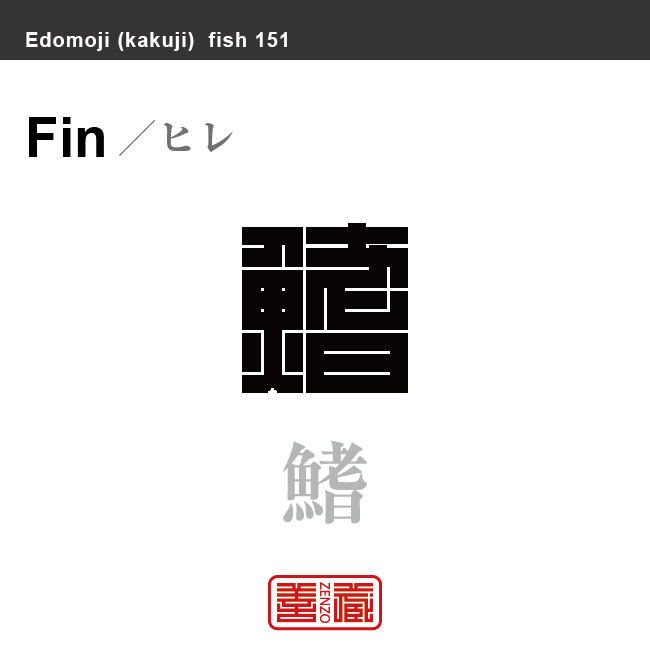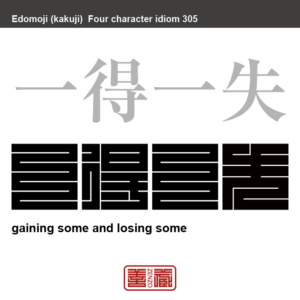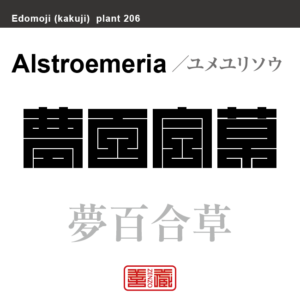鰭 ヒレ 角字で魚の名前、漢字表記、魚編(さかなへん)の漢字

鰭
ヒレ
英語:Fin フィン
Unicode: [鰭_0x9C2D]
鰭(ヒレ)は、水中で動かして、水をかいたり、水流を制御したりすることによって、姿勢を制御したり、移動することに使用する器官で、主に魚類などの脊椎動物が持ちます。
体から薄膜状に生え、内部に骨や軟骨による支えがある場合が多いです。
魚類は、尾ビレ、尻ビレ、背ビレ、腹ビレ、胸ビレを持ちます。(一部を持たない種もいます)
種によっては、歩行、威嚇、卵へ酸素を多く含んだ水を送るためにも使われます。
哺乳類、爬虫類、鳥類のヒレは、脚や翼から二次的に変化したものとされています。
角字とは?
江戸時代に誕生した角字は、正方形のグリッド内にほぼ水平・垂直のラインのみで文字(漢字)が表現されるグラフィックアートです。
正方形という限られた空間の中に、あらゆる文字を閉じ込めようとするグラフィックデザインは、前述した、ミニマムな物に対する日本人特有のこだわりが随所に感じられます。
そのシンプルで有りながら、奥深い「角字」は多くの日本人を魅了し、お祭りで着る半被や印半纏(しるしばんてん)と言われる着物や、商標、印鑑、家紋、看板デザインなどに今日まで数多く使用されてきました。
What is Kakuji?
There is a style of penmanship called “Kakuji” in Japan. Edo-born Kakuji is a graphicart that expresses letters (kanji) with almost horizontal and vertical lines only.
The design which bases on many straight lines seems simple, or too plain even at its first glance; yet this beautiful artistic penmanship that encompasses the aesthetic of the Japanese in the Edo era, also known as “Iki”, and playfulness has long been inherited to this day, thanks to the masteries’ long years of efforts in training and refinement.
Kakuji with its simplicity and depth is used for designs such as trademark, hanko stamp, family crest and signboard.































































 2文字コード:MZ 3文字コード:MOZ 数字:508 ITU:258 ccTLD:.mz
2文字コード:MZ 3文字コード:MOZ 数字:508 ITU:258 ccTLD:.mz







































































































































